Iraq Nimrud: An ancient city reduced to rubble by IS
- Published
A pile of rubble is all that remains of the western side of the ancient Assyrian city of Nimrud
Two days after the ancient city of Nimrud was retaken by Iraqi forces, the BBC's Richard Galpin was one of the first people to witness the scale of the devastation left behind by so-called Islamic State (IS).
Sheikh Ali Mohammad Hussain Albyati grew up in a village close to the famed archaeological site of Nimrud in northern Iraq.
The remains of the ancient Assyrian city, which 3,000 years ago was the capital of what is thought to have been the world's first empire, formed the backdrop to his childhood.
On Tuesday, he returned to the site for the first time since IS were finally pushed out by the Iraqi army, having held it for more than two years.
We stood next to a pile of smashed statues and the rubble of the King's Palace, dynamited and bulldozed by the militants.
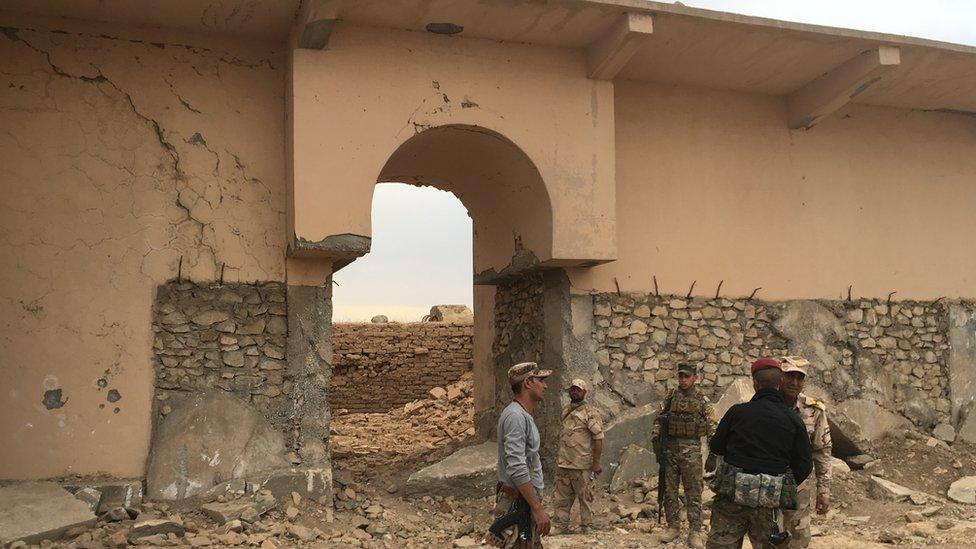
The entrance to the King's Palace is no longer flanked by the famed statues of winged bulls
"Ninety-five per cent of the site has been destroyed," he said. "I spent my childhood here and I'm very sad about what I've seen. Sometimes we feel that the ruins are more important to us than our own lives, our souls and our children."
In almost every direction we looked there was destruction.
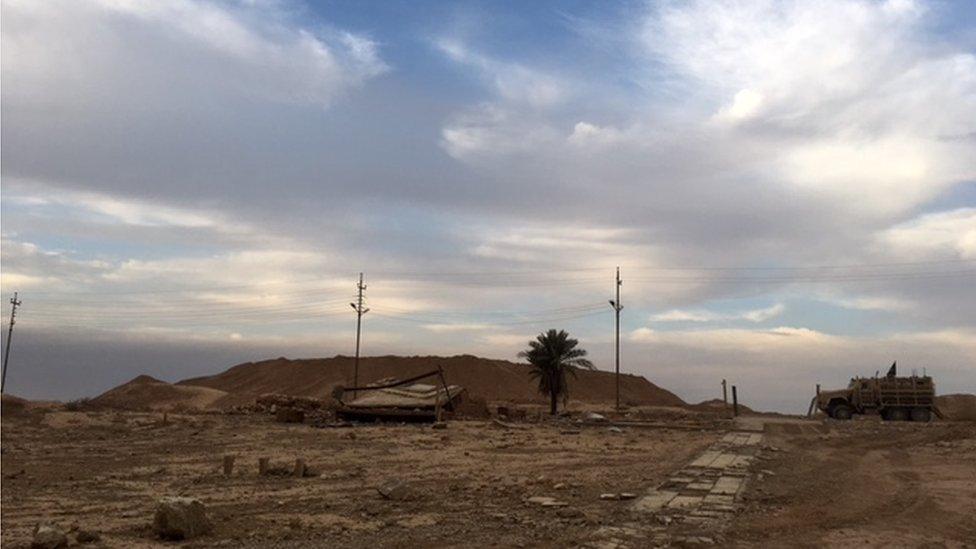
A 50m (164ft) high tower is now a neatly bulldozed mound
A few hundred metres from the entrance to the palace lay a strangely tidy mound of earth.
It was all that was left of a tower, or Ziggurat, which had overlooked the ancient city ruins.
"It used to be 50 metres high, now it is just 10 metres or even less," he said.
According to Sheikh Ali and villagers we had spoken to earlier, IS militants used bulldozers to demolish the tower last month.
When we made a closer inspection of the smashed pile of statues, we found intricate cuneiform writing carved into the stone as well as depictions of animals.
These were the precious winged bulls which had guarded the palace entrance and stood as symbols of the strength and culture of the Assyrian empire when it was at the height of its powers.
The human head, body of a bull and wings of an eagle represented wisdom, strength and sight.
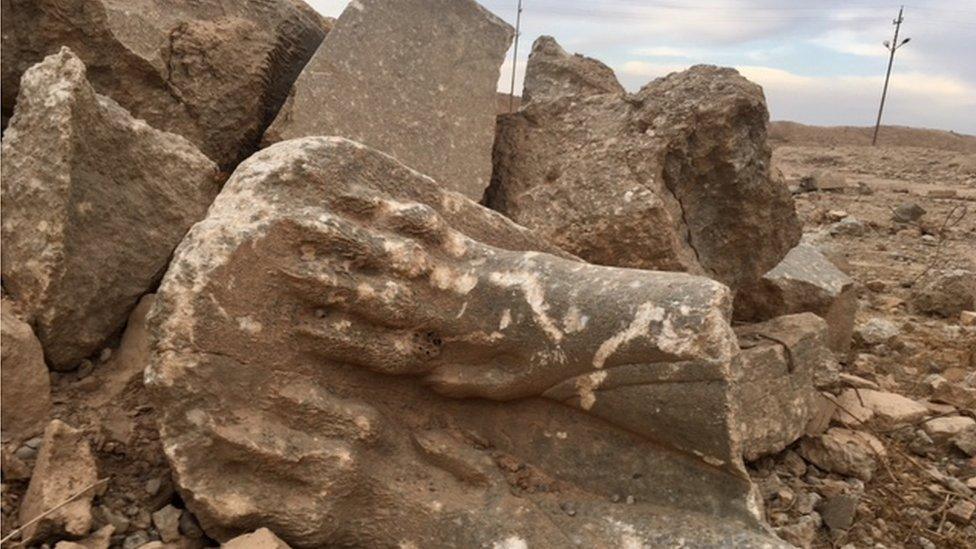
Statues more than 3,000 years old, dynamited to pieces by IS
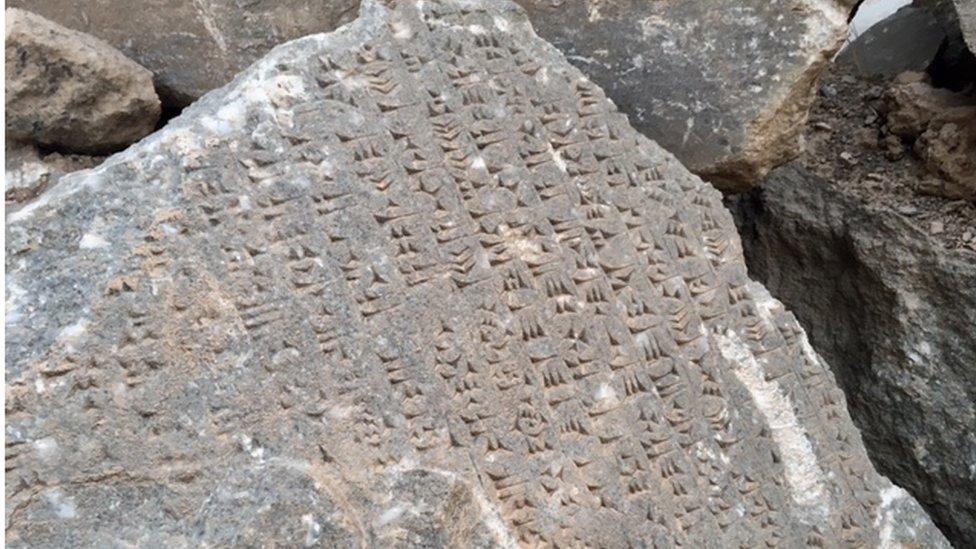
This cuneiform writing carved into stone - one of the few things left intact
Sheikh Ali is involved in the battles to regain control of Nimrud district from IS after recently becoming a commander in the tribal forces fighting alongside the Iraqi army in the current offensive targeting the militants' last strongholds in the country.
One of his motivations for joining up was to try to save the archaeological site, but to no avail.
"We should have arrived in the first six months [after IS took control]," he said, "but the political facts and lack of military means, led us to arrive so late. However, better late than never."
The site lies on a hill with a magnificent view overlooking the local villages and dry, dusty plains not far from the eastern bank of the river Tigris.
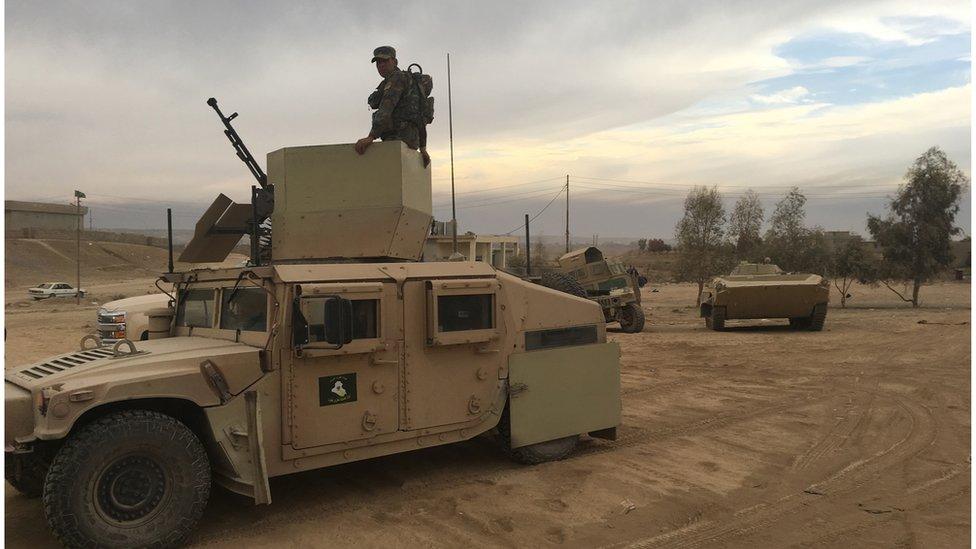
Tribal forces helped the Iraqi army push IS out of Nimrod
To stand there is to sense the power of the ancient Assyrian city, the heart of an empire which stretched across the Middle East from Turkey to Egypt.
But IS wanted to eradicate it, to erase Iraq's history, and they have gone a very long way towards achieving that goal.
But already there are calls for teams of experts to travel to the area once it is safe enough, to assess what can be done to save a precious part of the region's ancient history.
Something will still be salvaged from the destruction, not everything is lost.